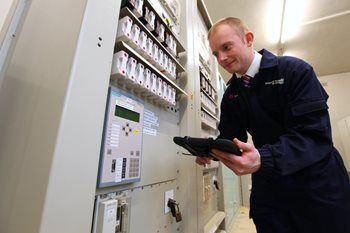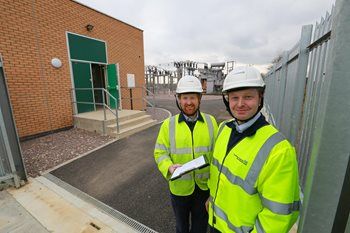The Hub caps off a successful project
LCH, which has been based in East Lincolnshire since 2011, was designed to test various innovative techniques to accommodate significant low carbon generation onto the electricity network without conventional reinforcement.
Lincolnshire is suitable for a range of renewable generation including wind farms and large scale solar Photo Voltaic (PV), but many generators could not connect because of the effect that a connection could have on voltage fluctuations and impedance, which impacts on network operation.
However, LCH has enabled WPD to offer over 171MVA of generation quotes in Lincolnshire, with 54MVA generation connections being accepted to date – and successful techniques from LCH are now ready to be used across the business.
Active Network Management (ANM), for instance, enables WPD to offer alternative generation connections with constraints – offering customers the option to unlock existing generation capacity with restrictions on use at certain times of the year. This reduces customer costs and long timescales associated with traditional network reinforcement.

Innovation and Low Carbon Engineer Ben Godfrey interrogates a Skegness 132kV relay used for the ANM scheme.
It is set to be rolled out in 11 areas where generation connections are limited due to voltage and thermal constraints. A second ANM was installed in Corby in March and one will be installed every six months until 2017.
In addition, a constraint analysis tool has been developed for customers and staff – the first time this type of tool has been developed for customer use – enabling users to estimate the level of generation that can be installed at a proposed location.
Another major success has been the Flexible AC transmission System (FACTs) device, STATCOM, which will increasingly be used in key distribution locations to improve voltage control and support further generation connections. The technology in this device controls the network voltage, reduces losses and prevents voltage fluctuations which can affect network performance. This is the first time a Distribution Network Operator has used it to control the 33kV network voltage in the mainland UK.
The ring network element has also gained significant learning points, helping to identify when it is most applicable to mesh ring networks and how this can be achieved.
Philip Bale, Innovation and Low Carbon Engineer, described the efforts of WPD teams to deliver the project. “Its success is due to the dedication and expertise of a number of teams to develop the infrastructure and equipment required.” 
Projects Grantham Team Manager Richard Horlington (left) and Philip Bale review the finished 33kV active ring network works at Chapel St Leonards substation. The building to the left was constructed as part of the work.
Overview of techniques
The project comprised six novel techniques to enable network connection where conventional connections wouldn’t be possible:
- New commercial agreements – Generator consultations helped to shape new alternative connection offers that optimise output and avoid network issues. An Active Network Management scheme was set up to control the output of alternative connections;
- 33kV active ring network – The installation of additional circuit breakers, disconnectors and smart grid protection, increases the control of the 33kV network based on real time power flows;
- Network enhancements – Over 10km of overhead line was upgraded with higher rated and lower impedance conductors to increase generation capacity;
- Dynamic system ratings – A method developed to calculate network capacity and operating limits on the 33kV network which is based on real time electrical outputs from wind farms instead of weather stations;
- Dynamic voltage control – Uses an algorithm to optimise target voltage settings by reviewing real time voltage profiles and power flows across the network;
- Flexible AC transmission System (FACTs) device – The technology controls voltage rise and voltage fluctuations which can allow more generation to connect and improves network performance.
LCH in numbers:
£3m – The money received by WPD from Ofgem to carry out LCH.
171MVA – Additional generation connection capacity offered as a result of LCH.
54 MVA – Additional generation connection offers accepted by customers.
£17m – The cost saving for one customer by offering an alternative connection compared to standard reinforcement.
- Innovation
